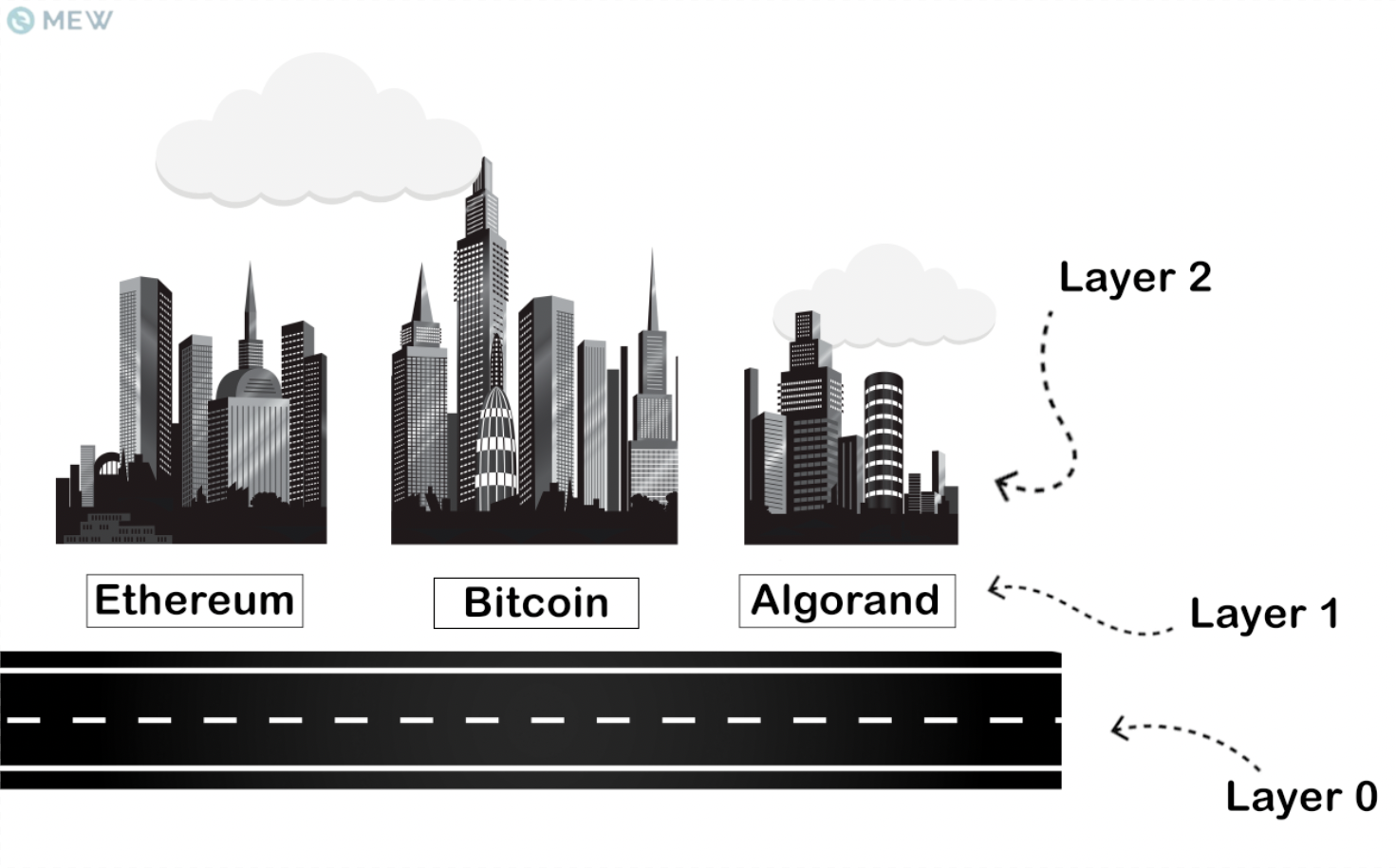One of the challenges of understanding blockchain tech is that it's not a single thing, but rather an ever-evolving ecosystem of projects, builders, and communities. There are many different types of blockchains, each with their own features and functions. Layer 1 blockchains, like Bitcoin and Ethereum, are often considered the original, foundational, and fundamental layer of crypto. Without Layer 1’s, cryptocurrency wouldn’t exist at all.
Another kind of blockchain are Layer 2’s, also known as off-chain scaling solutions. These live on top of an existing Layer 1 blockchain, relieving the main chain of certain tasks while relying on it for security. Finally, we have Layer 0 protocols, which aim to be an interoperability framework for Layer 1s to live on.
You might be asking yourself, “But MEW, why do L1’s need anything to ‘live on?’ Aren’t they perfectly fine how they are?” In this article, we'll explain what Layer 0 is, how it works and why it could end up being vital for the future of cryptocurrency.

An easy way to conceptualize Layer 0 is with the graphic above. Firstly, imagine that Layer 1 is the actual real-estate property underneath foundations and buildings. This is what we build on top of. Without land to build on (Layer 1’s), we would have literally no where to build! The town, or whatever you decide to build on your property, would be considered Layer 2 - where all of the dApps will live (like all the organizations, banks, businesses, parks, theaters, residences, etc are located in a city).
The important thing to understand here is that Layer 1’s afford us an opportunity to build while Layer 2’s are what is currently being built to support dApps and adoption. Note that there are lots of different things being built in the crypto space, and this is just an example to put Layer 0 into context when compared to Layer 1 and Layer 2!
Now, the way that the current system is set up makes it extremely difficult for Layer 1’s to communicate with each other. We’ve built “bridges” that connect one blockchain to another, but they are extremely inefficient and prone to hacks. Going back to our graphic above, this is like if we wanted to communicate with our neighbors and were forced to use a tin can telephone connected by strings. It does work, technically, but there is a much better way to be connected with our fellow neighbors and in this case, blockchains.
This is where Layer 0 comes in. Think of Layer 0 as the road infrastructure and a smartphone network that allows efficient travel and communication between towns and properties. In other words, we’ll be able to communicate cross-chain like never before.
But why…
So, why would Layer 1’s adopt this technology? Isn’t Bitcoin and Ethereum working fine without a Layer 0? Well, things get a little complicated when talking about incentives. There are multiple versions of Layer 0 being built at the moment. This could be comparable to road infrastructure vs railway infrastructure. They both have their pros and cons, and we really won’t know which will work best for us until our industry is a little more mature.
For now, the two biggest Layer 0 protocols being built are over at Polkadot and Cosmos. Polkadot offers a “relay chain” system where all of the protocols who join their Layer 0 get shared security. Cosmos is building a “hub system” where the blockchains who join them won’t have shared security, but will be able to interoperate - the whole point of Layer 0 in the first place.
It’s also worth noting that all of this technology is very new, and there is still disagreement about which networks are Layer 1 and which are Layer 0. Some networks, like Polkadot, have been called both Layer 1 and Layer 0 by different people in the space. In addition, there are Layer 1 networks that are trying to build scalability into their framework to start with, and not rely on Layer 2's in the future (Algorand, Harmony are examples). The most active development of Layer 2's is currently on Ethereum, with dozens of solutions in the works.
Finally, some would argue that bridges work just fine, and that Layer 0 is nothing but a gimmick in the crypto space. Only time will tell, but that’s the beauty a developing open-source technology – seeing how different approaches contribute to the growth of the ecosystem. Let’s hope Layer 0 ends up being as awesome as we’re imagining.

